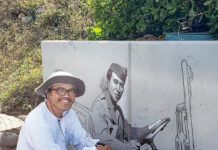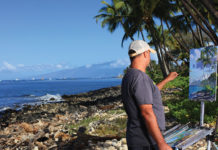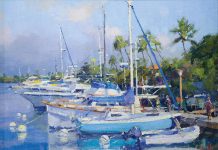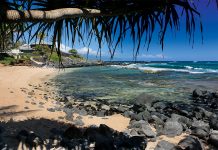Story by Paul Wood | Photography by Tony Novak-Clifford
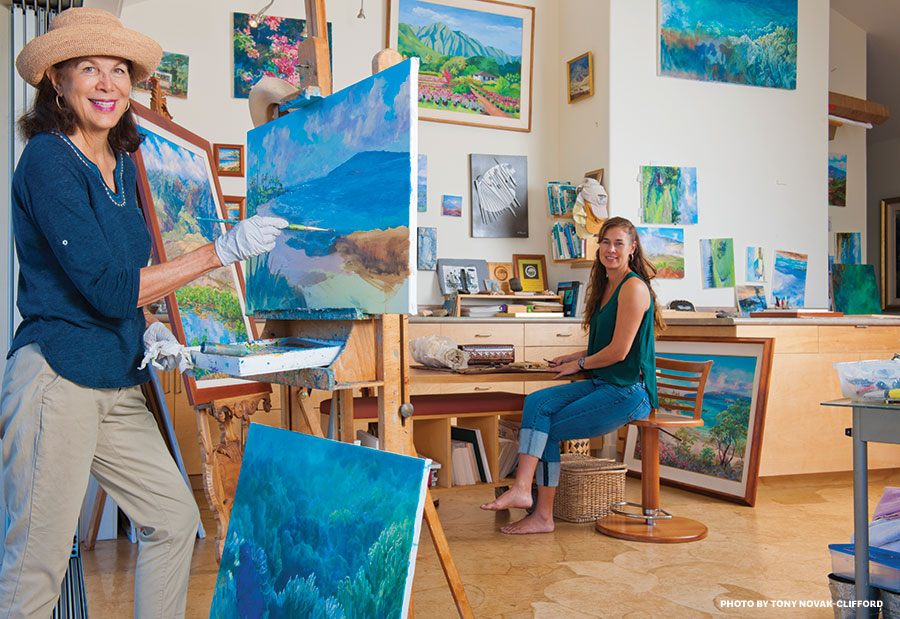
Denby Freeland-Cole has stopped by her mother’s painting studio to show some of her latest creations in kapa, the artful fabric that clothed pre-contact Hawaiians. It’s Sunday in rural Kula, far from traffic, a lush sunny day at the tail of a rainy winter. The studio ceiling is double-high, and light shines into the room. Part of the studio’s floor is surfaced with torn kraft paper that Denby and Betty Hay Freeland, her mother, installed and ornamented with subtle patterns. The scuff-proof installation required twenty-four gallons of Elmer’s glue. Half the studio walls are glass — tall, wood-framed sliders, and these are wide open. “It feels like being outdoors,” says Betty Hay. A fly gets in, and Betty Hay starts wrangling some screen doors. “I’ve never used these,” she says and she gives up, clearly uninterested in doors of any kind. Other walls are covered with Betty Hay’s plein-air landscapes, some unfinished and hanging at odd angles for her scrutiny, others simply archival, samples of the thousands of Hawaiian wilderness portraits she has created over the past five decades.
Asked to describe their mother/daughter relationship, Betty Hay says, “We are both quite independent, we like being active outdoors, and we enjoy traveling.” Denby says, “Mom’s more chatty than I am.” Betty Hay: “She’s more like her father in that way.” That’s pretty much all the difference they can identify. The rest is personal style.
The landscape paintings of Betty Hay Freeland are iconic in Hawai‘i. They possess a bright, glinting liveliness, something sun-dazzled, with earnest attention to lighting that ranges from bright foregrounds to the depths of indigo-touched ravines. She dotes on the deep backgrounds. Working in oils, she creates portraits of places in time. She knows that the islands change. “I’ve painted a lot places that don’t exist anymore.” She painted the Wailea shoreline as the resort-building cranes came in.

